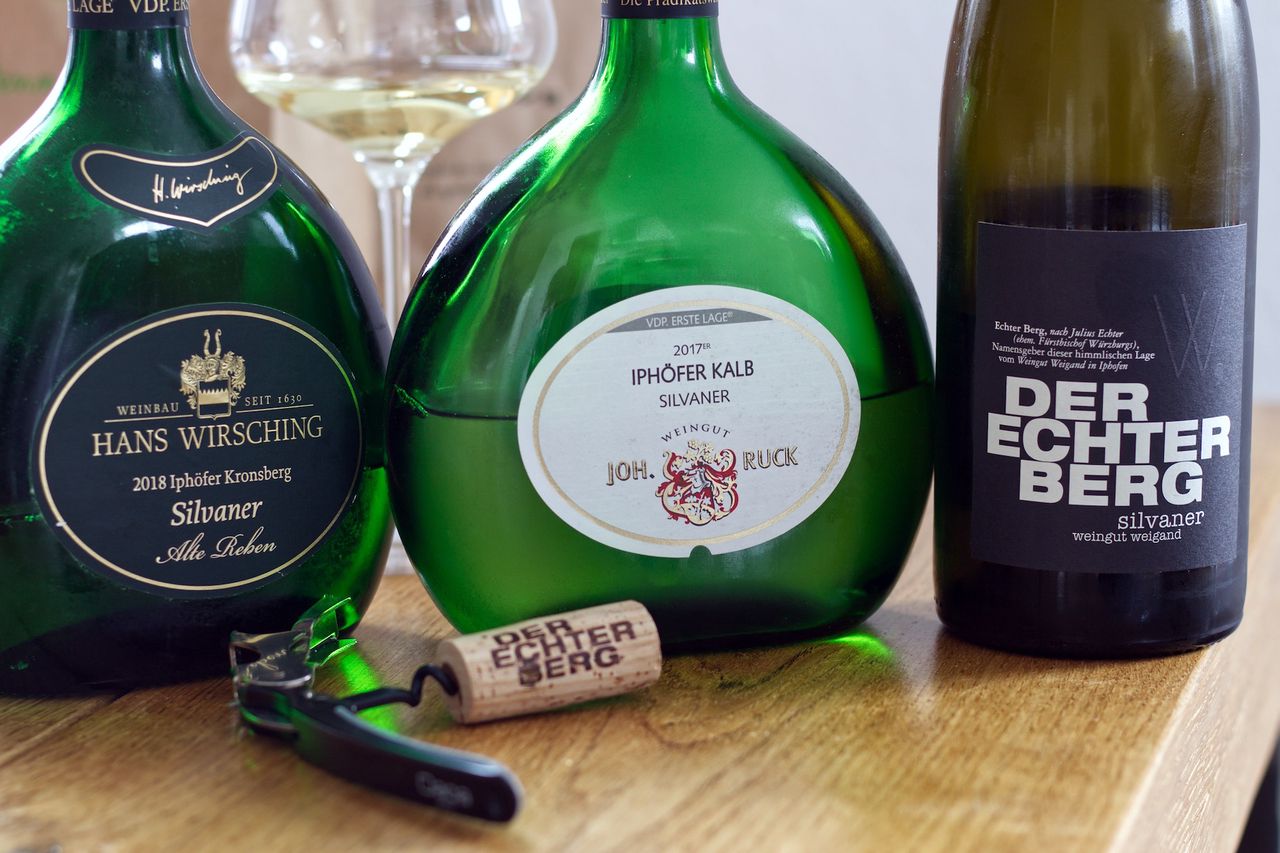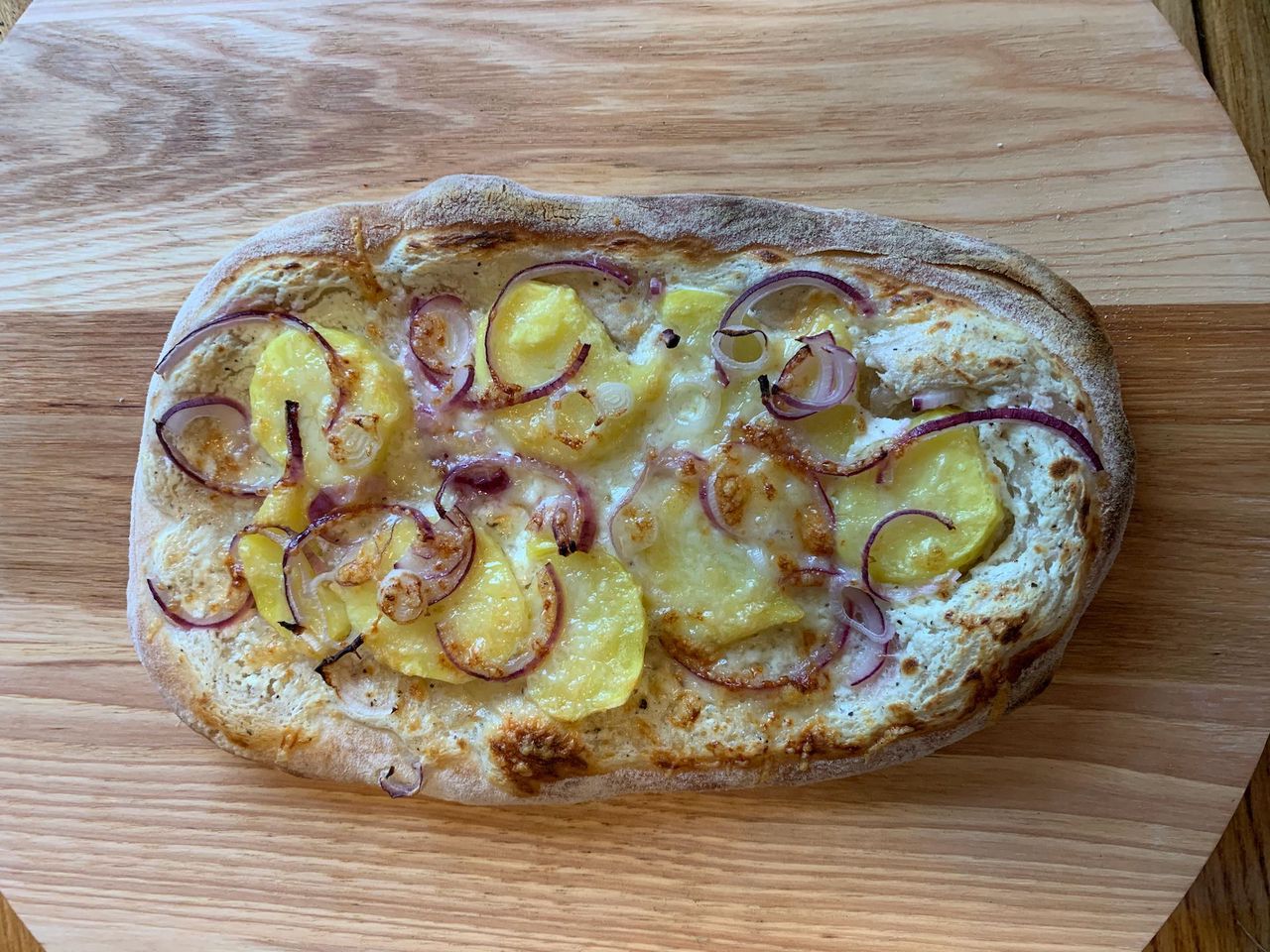Three Silvaner from Iphofen
We drink three Silvaners from Iphofen in our glass: From the Hans Wirsching Winery an Iphöfer Kronsberg 2018, from the Johann Ruck Winery an Iphöfer Kalb 2017 and from the Weigand Winery a Der Echter Berg from 2017.

When tasting several bottles, one can certainly choose more representative individuums than these three bottles of Silvaner. Three different winemakers, three different vineyard sites and then they are not even from the same year. A bit of Villa Kunterbunt. But what connects the bottles is, of course, that they are all made of Silvaner. But even more important is that they all come from the three most famous Iphöfer sites, Julius-Echter-Berg, Kalb and Kronsberg, and all three winegrowers make their wine in Iphofen. A tour through and around Iphofen in Franconia.
The tour begins with the Silvaner from the Iphöfer Kronsberg, which owes its name to the trees that stand above the vineyard like a crown. The wine is from the 2018 vintage and was made by the Hans Wirsching winery. Comes across quite reserved immediately after being opened. Somewhat reductive, mineral and herbal. And, mild spoiler, more so than the other two. The acidity is a bit brisk and overall everything is still a bit unsorted, but that can of course be due to the young age. In the course of the evening, the Silvaner becomes more at home, becomes creamier and even more herbal. A little bergamot joins the nose.
The Kronsberg benefits greatly from a night in the refrigerator. Intense creaminess, fine spiciness in the mouth and also more intense in the nose with herbs and crumbly apple. The acidity is much better integrated. Unfortunately the alcohol stands out a bit disturbingly. This will hopefully be rounded off with more cellar maturity.
The next bottle comes from the Iphöfer Kalb, which is not named after animals but is a short form of the bald mountain. The Silvaner is vintage 2017 and from the Johann Ruck winery. Intense yellow-fruity with mango and a touch of banana. Ripe, fruity acidity on the tongue. Here mainly apple and pear and no more exoticism. Along comes a dash of lime. With air the exotic fruit in the nose recedes, the wine becomes spicier, more phenolic and gains length. Some liquorice is added and what started out fruity sweet is now intensely spicy with pome fruit in the background.
Despite the only 11.5% alcohol, the wine feels intense and dense to the palate after one night. Becomes more complex and it is really hard to grasp exactly what you have in your nose. Only the quince note stands out. The fruity, ripe acidity is still there and brings a good flow. I enjoy it a lot.
The third bottle comes from vines from the Julius-Echter-Berg, which is not particularly real, a questionably funny joke that works only in german, but was named after the bishop Julius Echter. The grapes were harvested in 2017 and made into wine at the Weigand winery, which calls the wine Der Echter Berg. Quite contrary to the other two representatives, one has a decent wood note in the nose. Virtually no fruit, which is especially noticeable next to the Kalb. In the mouth a fresh acidity, a lot of velvety notes and a bit of apple skin on the tongue. A lot of substance is there. In the course of the evening it gets denser and denser, more and more buttery and creamy but never fat. The play between acidity and tannin is really nice.
On the second day, the wine also falls outside the scope of the round. You can already see where Andi Weigand is heading, which was clearly shown by tasting a 2018 version in the WRINT Flaschen podcast. Less intervention, more natural. The little fruit, the tannin and now also something floral out the back is, if you can get anything out of it, definitely beautiful.
All three wines fared exceptionally well with Dinnete, a swabian variant of pizza.

Related Posts
- Stefan Vetter - Sylvaner Muschelkalk
- A weekend in Iphofen
- Horst Sauer - Silvaner S Escherndorfer Lump 2020